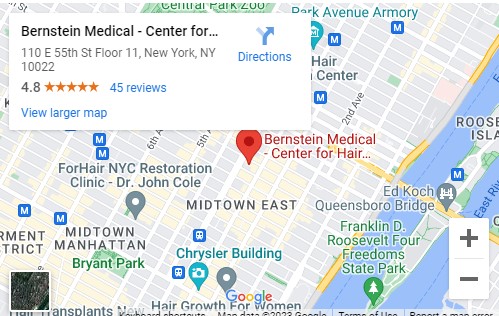Hair Cloning Obstacles

Address
110 E. 55th Street, 11th Floor
Between Park Ave and Lexington
New York, NY 10022
Between Park Ave and Lexington
New York, NY 10022
Phone
Clinic Hours
Monday – Friday
8:00 AM – 4:00 PM
8:00 AM – 4:00 PM
Contact Us
All Fields Are Required

Contact Us
Directions
Copyright © 2025 Bernstein Medical Center for Hair Restoration




